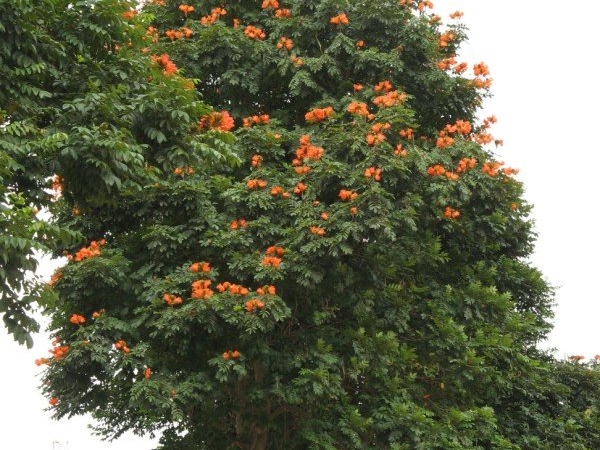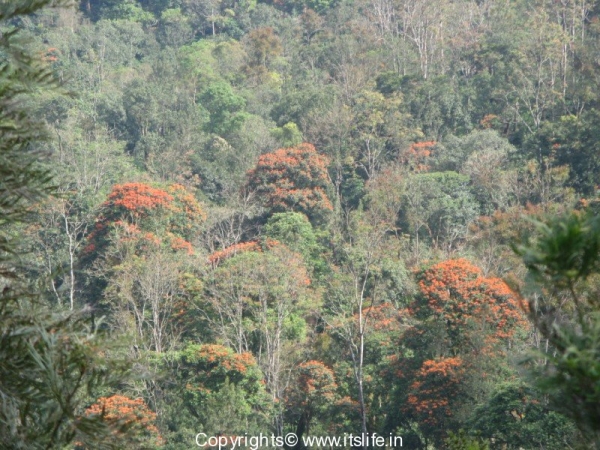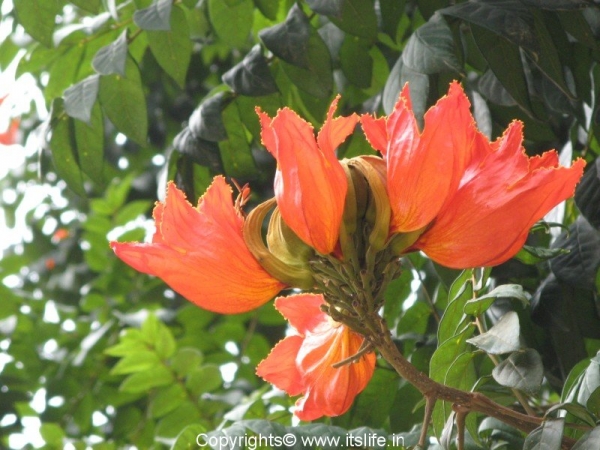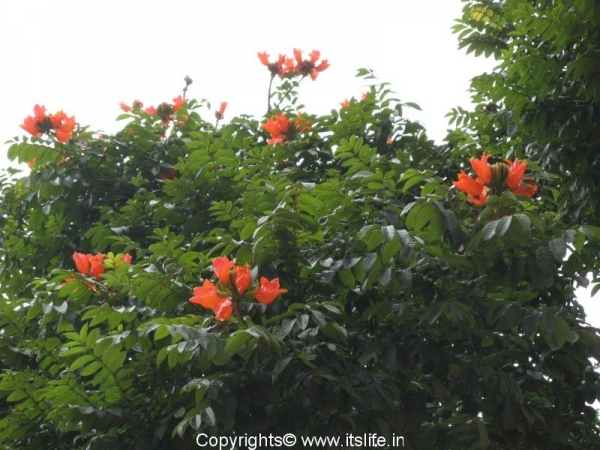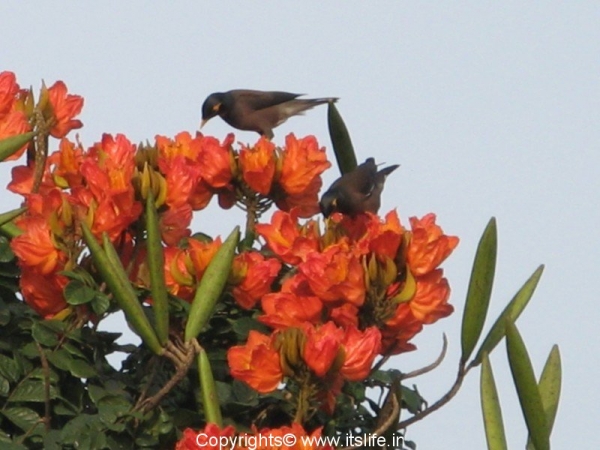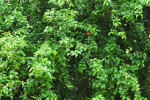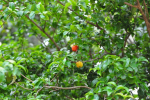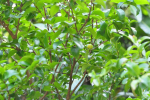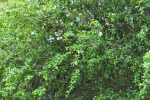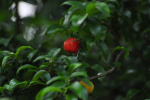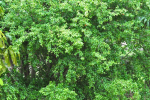One of the most sought after tree to beautify city lanes, Aftrican Tulip trees are a sight to behold when these trees are covered with the orange blooms. The floor under the trees is colored orange with the flower fall.
Plant Summary:
The Tulip tree, which is a native of tropical Africa belongs to the monotypic genus Spathodea belonging to the family Bignoniaceae* (trumpet creeper family). The botanical name is Spathodea Campanulata and the common names are Fountatin Tree, Fire ball tree, Flame of the forest, Nandi Flame, Patadi in Tamil and Rudrapalash in Bengali.
Picture above – The forests near Abbey Falls in Madikeri/Coorg
The tree can reach heights of 20 to 80 feet. The trunk is light gray and lightly buttressed. The wood is soft and brittle and it is not surprising to find hole-nests built by Barbets and wood peckers.
The compound leaves of the trees are bronze when young and they turn dark green and glossy later. The oval leaves are 1-2 ft long placed opposite to one another. When you look at the closed olive colored buds at the tip of the branches, you cannot imagine that they hold an impressive cup shaped bright orange flowers with a yellow outline. A very rare yellow variety also exist known as Lutea. The flowers holds the rain water and dew and this seems to be an inviting drink for many birds like Myna, Humming bird, Sun Birds etc.
The 8” pods are boat shaped that holds as many as 500 small thin seeds. The trees prefer direct sunlight and can be grown in all types of soil.
Medicinal Use:
The bark of African Tulip tree is used to heal burn wounds as they have antibacterial properties. The bark and the leaves also have anti-malarial properties.
In Ghana, the bark and leaves of this tree are used in traditional medicine.
*Bignoniaceae, or Trumpet Creeper Family, is a family of flowering plants comprising of about 650-750 species in 116-120 genera.
